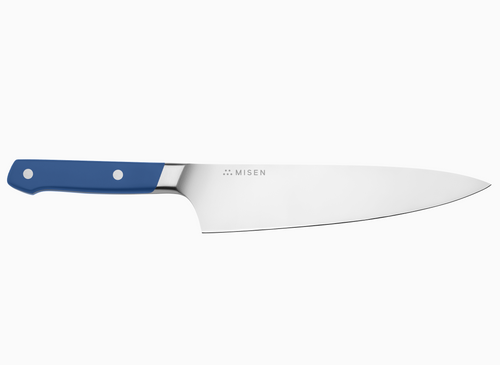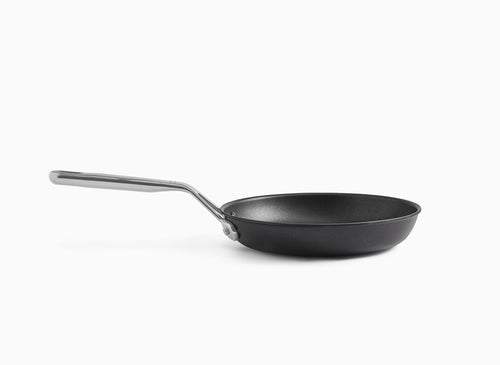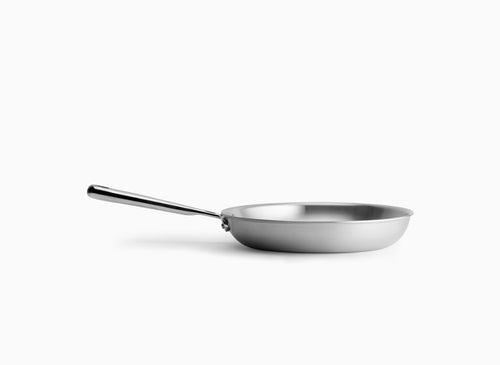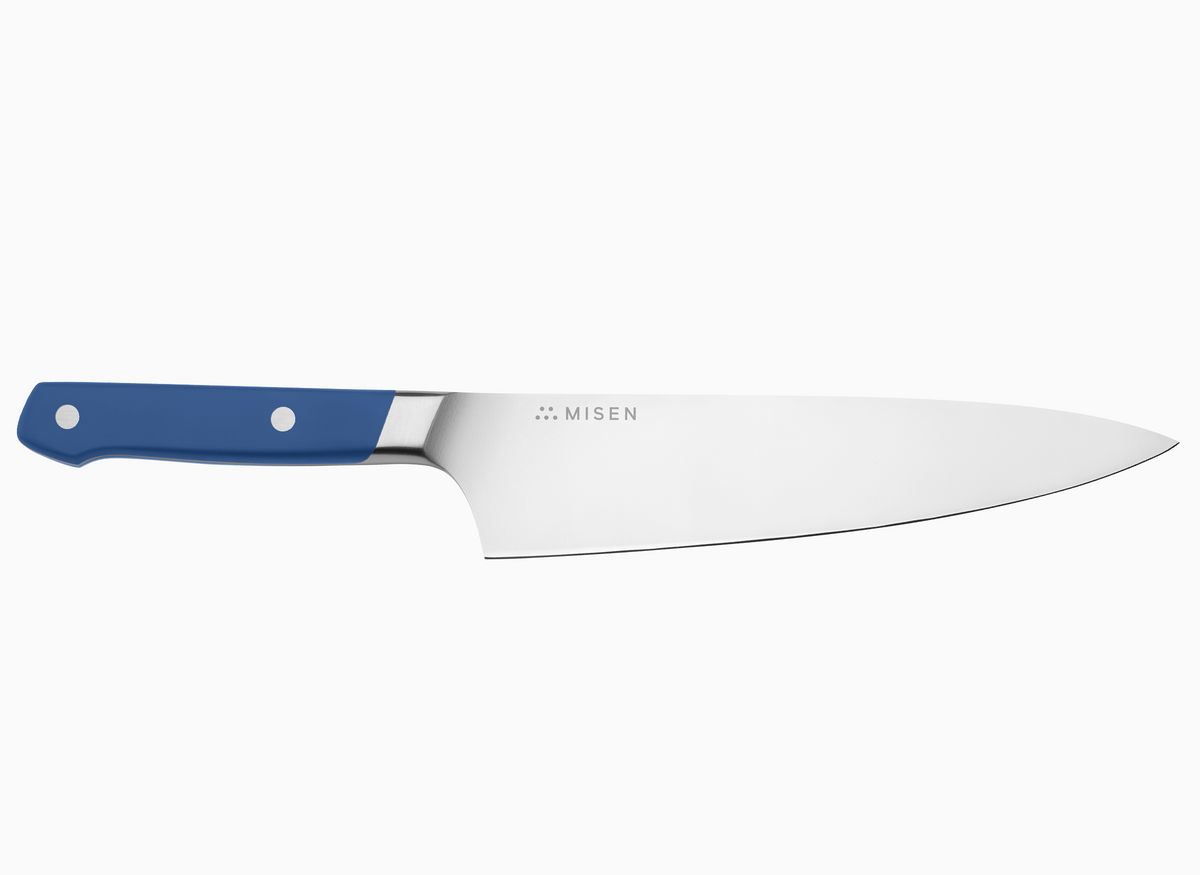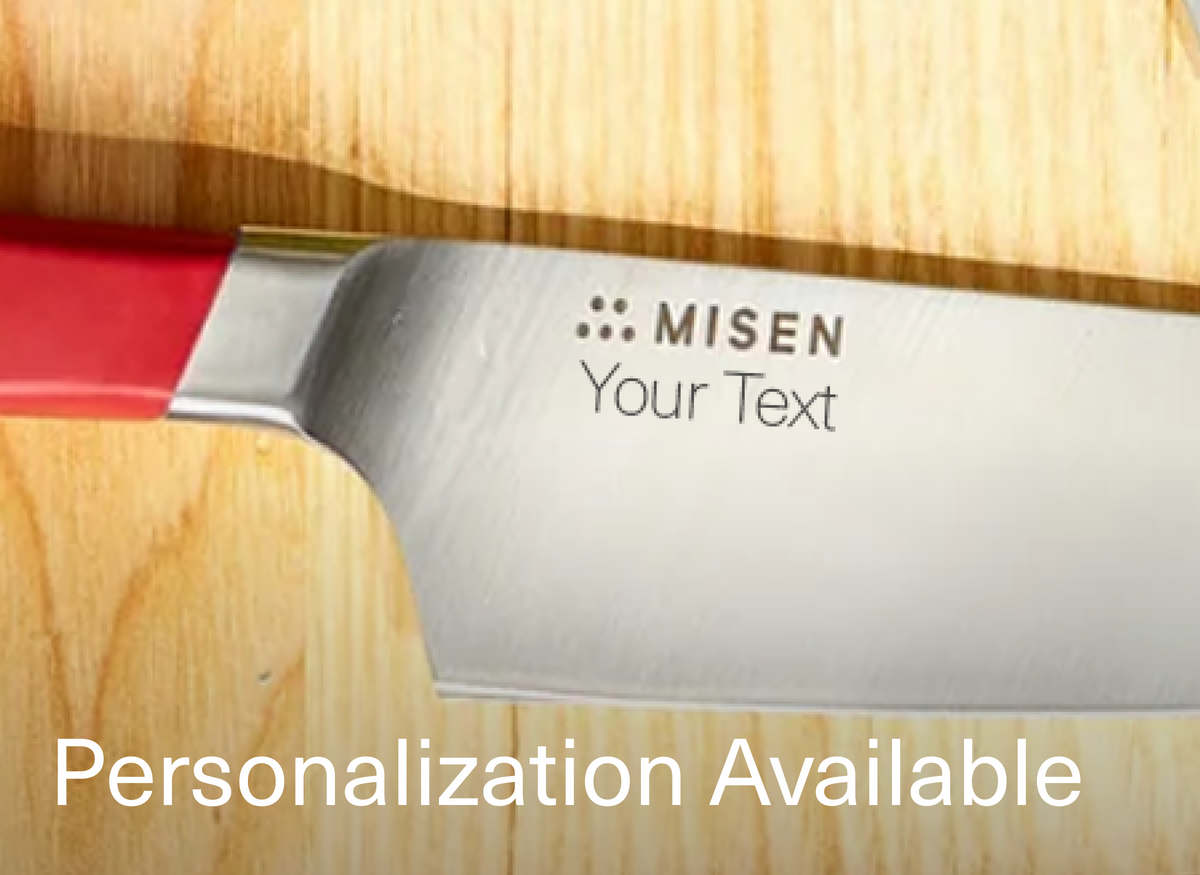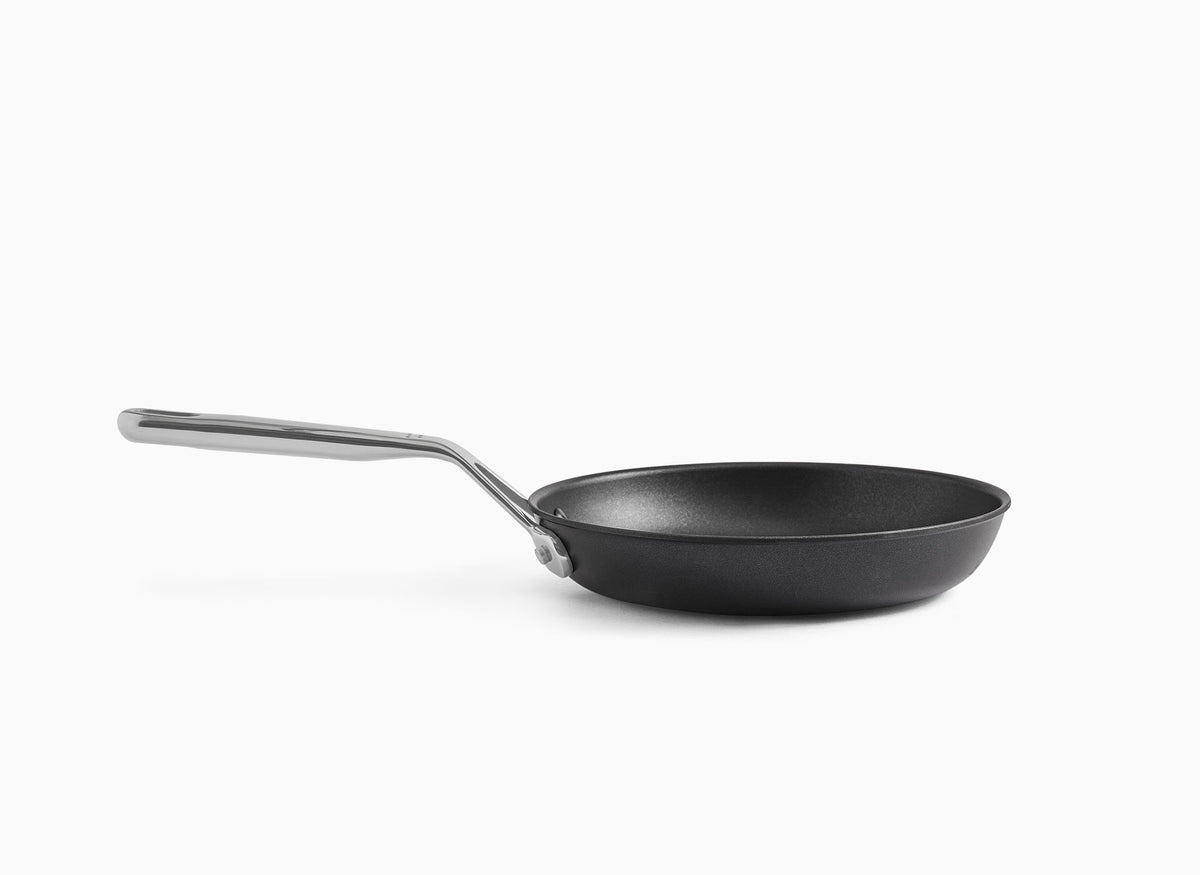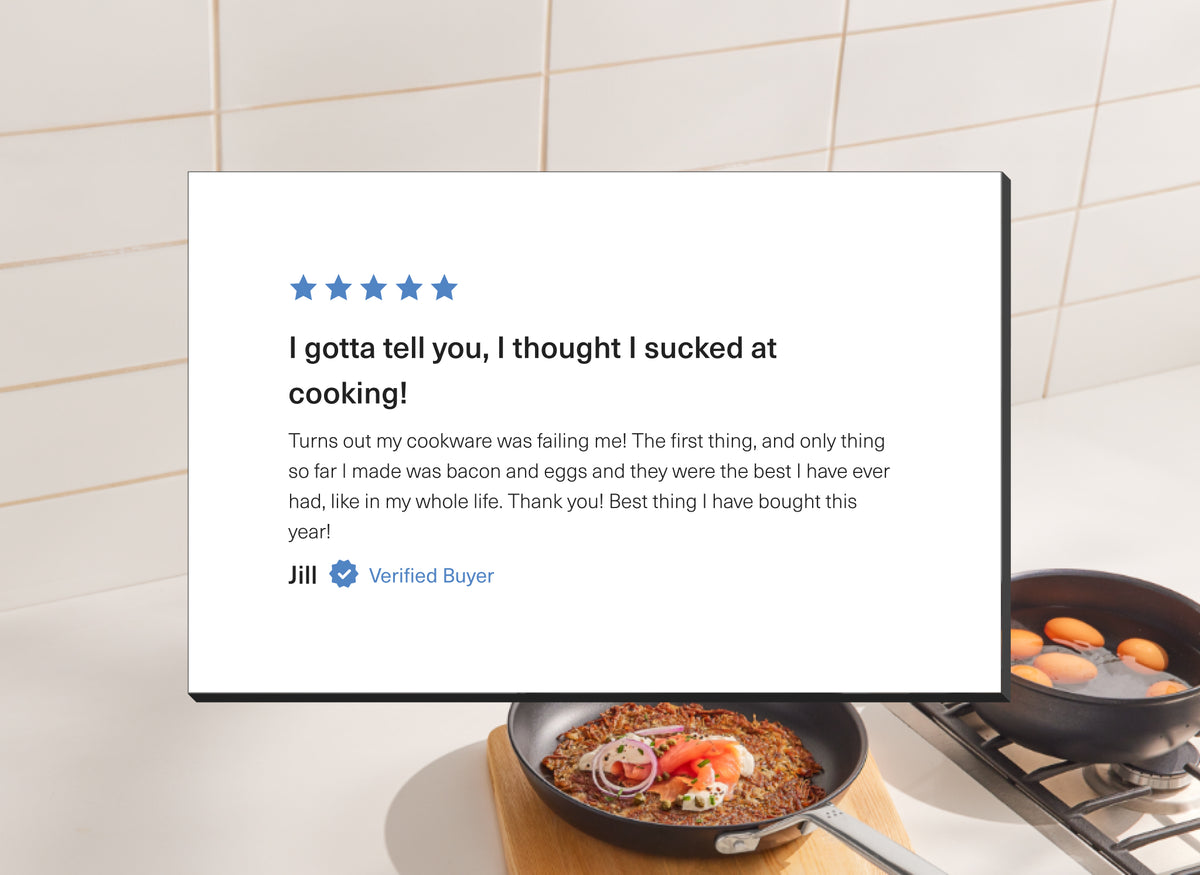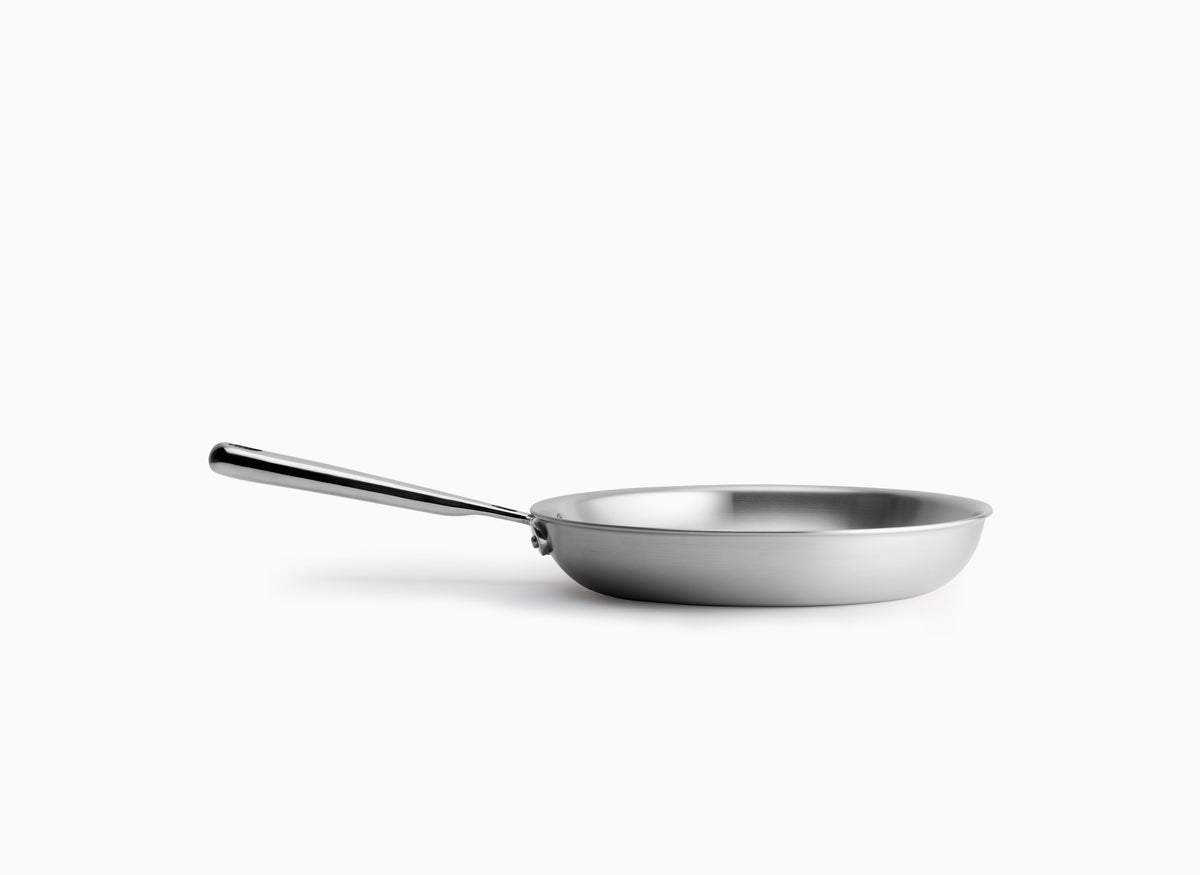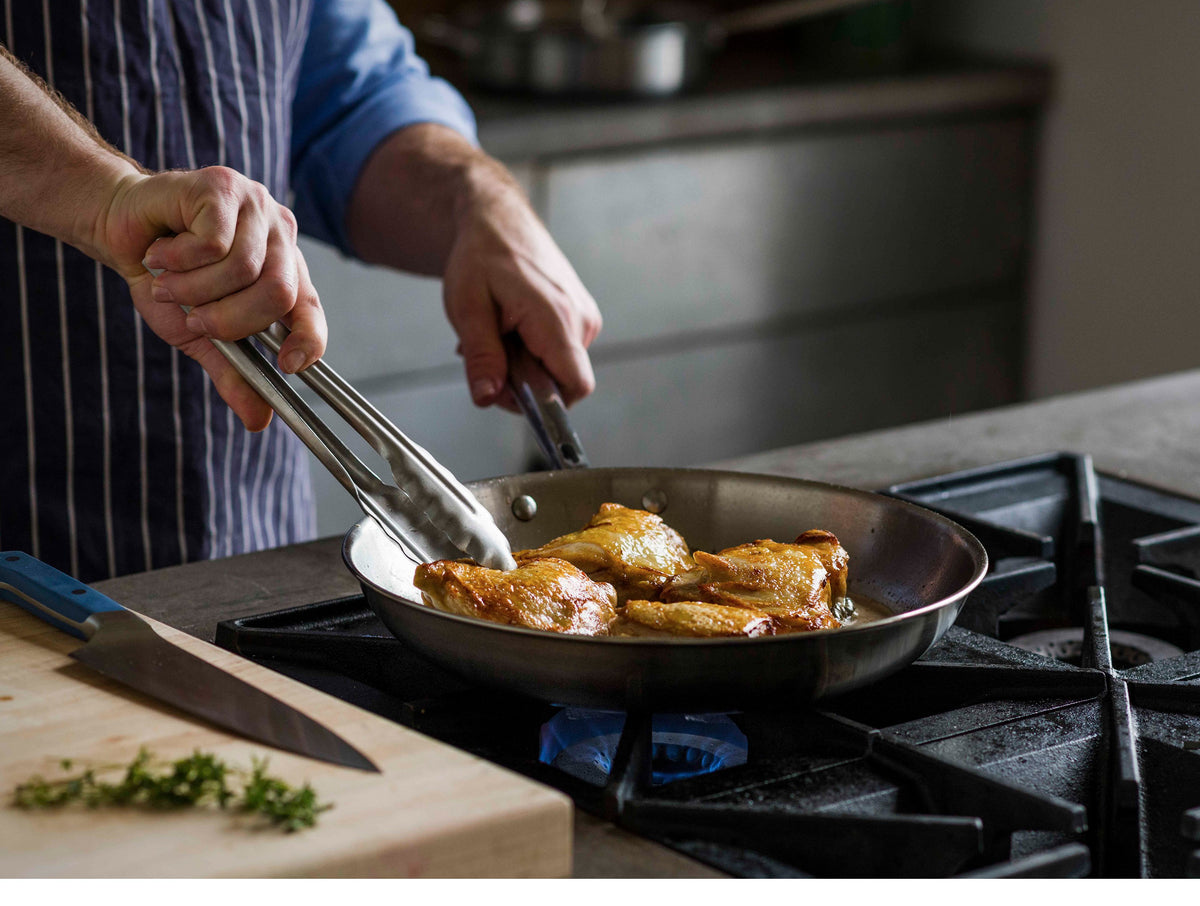The Best Kitchen Knives for the Home Cook
 The chef's knife is the knife you'll use for most of your prep work.
The chef's knife is the knife you'll use for most of your prep work.
- Choose quality over quantity when it comes to kitchen knives.
- You may never use some of those specialty knives that come with a set.
- Traditional German and Japanese brand names aren’t your only choice.
It’s tempting. You see the block of wood showing off a kitchen knife set. Sure, a bunch of them are steak knives. But the rest should take care of any cutting situation in the kitchen, right?
Cooking experts advise you to pass by those deluxe knife block sets. From a quality and price perspective, these sets force you to buy knives you don’t need, which are bundled with lower quality versions of the knives you actually do need.
Free yourself from the block mentality. Instead, get comfortable with the knives you really need. There are better things to keep on your counter than a giant block of wood holding a bunch of knives you will probably never use. Carving knives and kitchen shears look nice, but how often will you pull them out? Chefs and experienced home cooks agree: you really only need three essential knives in your kitchen. Here’s what they are.
1. Chef’s Knife
If there’s a standout in this ensemble kitchen cast, it’s the workhorse chef’s knife. You’ll also sometimes hear it referred to as a cook’s knife. Chefs and cooks alike use it for the majority of kitchen tasks that require a razor-sharp knife.
It’s equally adept at cutting vegetables, fruits, meat, or fish. The size of a chef’s knife can be intimidating for some. Common blade lengths range from an 8-10 inches.
Some professional chefs prefer a 12-inch version, but they’ve usually got plenty of counter space and oversized chopping boards. It’s a bit much for home use, and it can be literally too much to handle for people with smaller hands. A better choice is the Misen chef’s knife. It has a blade length of 8.2 inches, a size that offers optimal efficiency and versatility.
German-Style vs. Japanese-Style
You want this kitchen knife to offer some heft to help you chop through firm vegetables. This weight is a characteristic of high-end German-style knives, like the Wüsthof Classic 8-inch cook's knife or the comparable Zwilling J.A. Henckels International Classic 8-inch chef's knife. The blades tend to be slightly thicker than their Asian counterparts.
One of the reasons why German-style knives are heavier is because they feature a full tang. This means that the knife is made from a single piece of stainless steel with two handle pieces (called scales) pinned to either side. A full tang offers balance and durability.
Traditionally, a Japanese knife features a partial tang. The handle is glued on to the carbon steel. It makes the knife lighter and presents the cook or chef with more dexterity, but the tradeoff is that it must be used with more care. The weakest point is where the partial tang and handle are fastened together — a potential problem that simply doesn’t exist with a full tang.
It’s not necessary to choose one style over the other. You can get the best of both worlds.
A Chef’s Knife Alternative: The Santoku Knife
It’s easy to mistake this knife for a chef’s knife. Two discernable differences are the “sheep’s foot” tip of the blade and its overall length. A santoku knife ranges in length from 5-8 inches. Cooks with small hands find this smaller knife easier to handle.
Because it’s shorter, the santoku knife is lighter than a chef’s knife. Look for one with a full tang. It offers the benefit of more balance. Japanese steel is heavier — although more brittle — than German steel, which gives the santoku the heft you want when taking on a melon or squash.
While the chef’s knife’s sharp edge features a curved blade, the santoku has a mostly straight cutting edge. You don’t have the ability to rock back and forth on the blade as you chop, which is something that makes the job easier using a chef’s knife. The santoku also has a sharper 12-15 degree blade angle. Many also have a single bevel. This means the blade is tapered on just one side. The single bevel allows a santoku knife to make extremely thin slices.
Our take on the classic santoku knife incorporates a slope bolster that travels gradually into the blade face. It offers superior comfort and control. We manufacture it with 60% more carbon content than other premium stainless steel knives. The two knives share similarities, but they each excel in areas different enough to warrant having both instead of choosing just one.
Both will make fast work out of dicing an onion. You’d go with your santoku knife if you wanted paper-thin slices because of the blade’s narrower cutting angle. But you’d pick up your chef’s knife if you needed to chop up a bunch of onions because the curved blade would allow you to rock back and forth across the cutting board and reduce fatigue.
2. Paring Knife
 The paring knife is perfect for detail work.
The paring knife is perfect for detail work.
A paring knife — with an average length of only 3 1/2 inches — is the third essential kitchen knife you need. It’s small enough to move away from your board and be used in the air. You can hold food in your hand and carefully cut with a paring knife. The combination of a small handle and blade offers you this extra flexibility and control.
You wouldn’t use your chef’s knife or a santoku knife to peel an artichoke stem or hull some strawberries. There’s too much blade in the way. They’re made to be used with chopping boards. It’s why we like to call them board knives.
A paring knife is perfect when you’ve got details to focus on. It’s a better choice for thinly slicing a garlic clove because the clove won’t be obscured by the blade. The tip of a paring knife can easily be maneuvered underneath potato skins for easy peeling, and it’s nimble enough to slide under the membrane of a rack of ribs so you can loosen and remove it.
Ceramic paring knives are popular, but they won’t last as long as one made of quality high-carbon stainless steel. Our paring knife features a sharper blade than most Western-style knives. We give it a Japanese-style 15-degree angle for more precise cuts.
3. Serrated Knife
 The sawing action of a serrated knife can help you slice through difficult produce.
The sawing action of a serrated knife can help you slice through difficult produce.
The teeth on a serrated knife make it perfect for slicing bread, but you can use them for more than that. The jagged edge of this knife blade grips and penetrates the slippery surfaces that a chef’s knife would just slide across, like the infamous tomato.
A serrated knife would work just as well on bell peppers, citrus, and even pineapple. With a blade length that averages 6 inches, it’s long enough to cut through a watermelon — and capable of it too because you slice in a sawing motion. The teeth are designed to allow the stainless steel blade edge to grip and rip through food. The knife is not meant to make clean, precise, or very thin slices. It would make a mess of a clove of garlic or a sprig of fresh dill, but it’s great for difficult to cut ingredients.
Wider, deeper pointed serrations make the blade more efficient. Our serrated knife features just 33 tips, which offers more bite but a smoother cut. You’ll appreciate the fewer crumbs it makes when you use it to slice up a crusty baguette. It'll become your favorite new serrated bread knife.
One Knife You May Not Need
 Boning and fillet knives are specialty knives mostly used by butchers.
Boning and fillet knives are specialty knives mostly used by butchers.
Don’t be confused by the name. A boning knife is most commonly used by butchers for all cuts of meat, but this knife is not meant to cut through bones. Instead, it’s designed to cut around bones.
Owning a boning knife gives butchers the flexibility to separate meat from bone or slice through cartilage and joints. The sharp, pointed, and narrow blade is offset by a hefty handle that offers a better grip. You wouldn’t want to lose your grip while working in oddly shaped areas or small spaces as you release meat from curved bones. The blade is meant to move and flex so you can deviate from the straight lines that most knives force you to cut.
A high-quality boning knife is the perfect tool to separate a fillet of salmon from its skin, making it unnecessary to also own a fillet knife. The blade is flexible enough to maneuver in place to precisely remove the skin without wasting any of the flesh. Butchers avoid boning knives with ceramic blades. They won’t flex. They’ll snap or shatter.
This specialized knife is something you need only if you spend a lot of time doing what a butcher — even at a regular grocery store — will do for you, or has already done. Most fish, poultry, and meat is already prepped, making the boning knife unnecessary for most home cooks.
A quality boning knife is one of the few knives that will not be balanced even if it has a full tang. The heavier handle puts more control in your hand, so you can make precise cuts and movements that wouldn’t be possible with a balanced knife.
If you decide you need one, look for a boning knife with a pinched bolster. It’s where the blade and handle meet, and it’ll allow you to safely get your fingers closer to the blade, and it literally looks as if someone pinched the steel while it was still hot and malleable. This increases your ability to make precise cuts.
An Important Maintenance Tool
Purchase a honing steel and use it to maintain the sharpness of your knife blades. The honing steel is not a knife sharpener. Instead, it preserves blade sharpness by realigning the microscopic teeth at the very edge of the blade.It’s not a knife, but it will increase the performance of your essential kitchen cutlery superstars.
Regularly running your knife blade along the honing steel will lengthen the time between blade sharpening. Use it for all but the serrated knife.
Less Is More
Watching those cooking competition shows on TV might make you think you’ll need a kitchen the size of your entire house — and a budget to match — to cook like an award-winning chef. Look closer next time you watch an episode. There’s no massive array of knives on hand. Take it from the pros. You can accomplish everything with just three knives.
